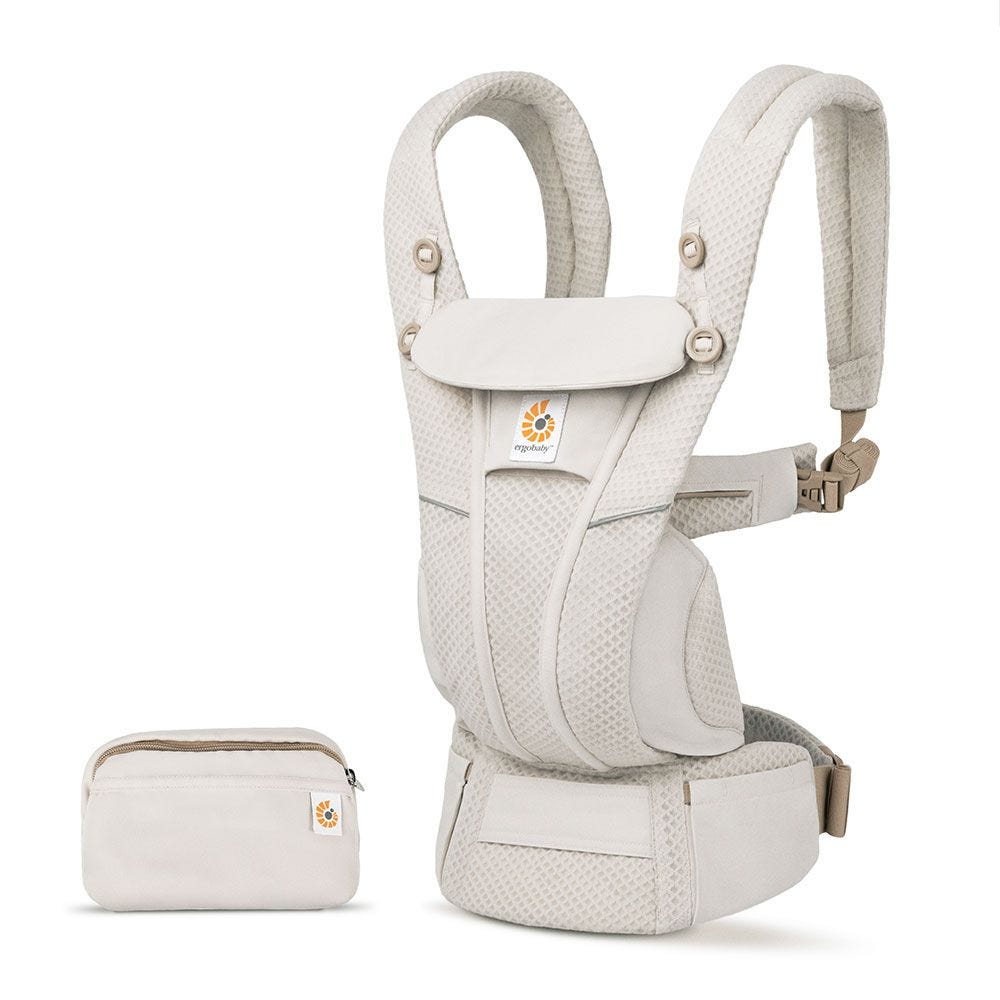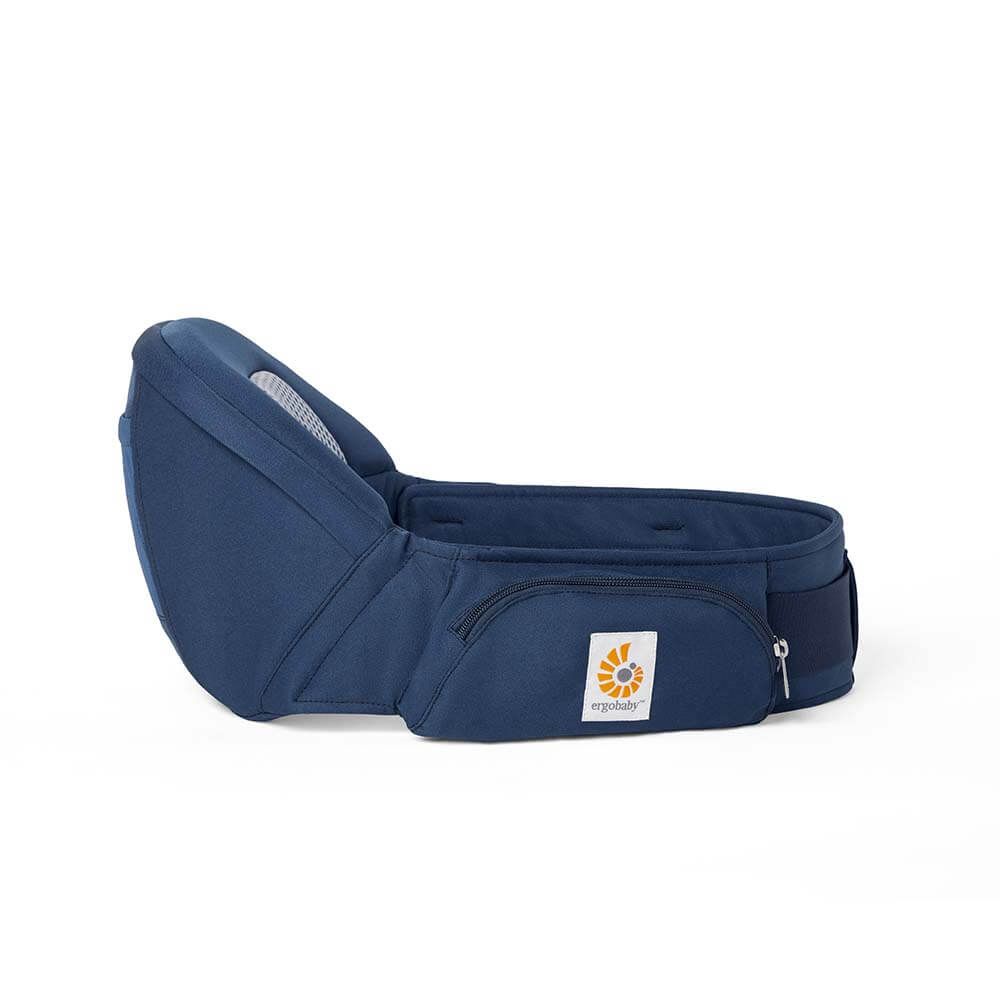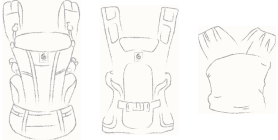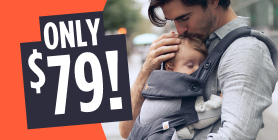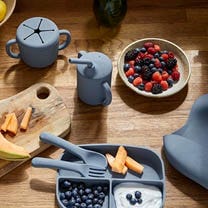Why choose the front position? Is it really ergonomic?

Front Position of the Baby Carrier
Recommendations and Information
on the Ergobaby Baby Carrier Front Position
(Front Facing/Facing the World)
Parents often hear that carrying the baby facing forward is "not good". This is generally not correct and should be considered more diligently. At Ergobaby we encourage parents to trust their instinct and to react intuitively and appropriately to their child's needs.
- With this method your baby will stay active: that is, the baby will be awake, attentive, and more active in this position. They will be in touch with their surroundings with their eyes wide open, making sounds of curiosity and smiling.
- The front carry position can be used from 6.4 kg and at least 5-6 months of age. At this age, children have mastered hand-eye coordination and the hand-holding reflex has disappeared. Babies want to actively participate in what is happening. Before this age, we do not recommend a front carry position.
- It is a natural and intuitive carrying position, : for baby to be carried as if within parents arms. A baby carrier relieves the strain on parents' arms and back and creates two free hands to carry out daily tasks, for example; housework, cooking, the weekly food shop, country walks, school runs, dog walks.
- In Ergobaby baby carriers baby is in ergonomic position M : in front carry: this means that the legs are bent, slightly apart and the thighs are supported.
- This leads to a relaxed position of the back and head, similar to that of a reclining chair: the child's back rests on the parent's upper body and the head can relax as needed, but is also actively supported. Exactly the right position for gradually exploring the world, protected and supported.
- Children go through rapid developmental stages in the first year of life. The front carrying position allows the child to grasp from and over the middle of the body with lateral weight shift.. Spatial perception becomes increasingly differentiated and the field of vision widens. In this position, the baby trains its motor skills, its coordination (hand/hand, hand/eye, hand/foot) and stimulates its muscles. Curiosity grows.
- The four different and varied carrying positions (belly carry, front carry, hip carry and back carry) in the Omni baby carrier and Aerloom baby carrier allow a 360 degree panoramic view, individualised to the needs and developmental stage of the child, provide the child with different movement impulses and stimuli and encourage depth perception. The baby can always experience different movements while being carried or moving on thier own.
- Up to 5 months, baby should be carried facing the parents (inward facing). Eye stimulation promotes posture, movement and uprightness, which is why it is especially important "in the direction of travel" in the child's development.
Recommendations and Information
on the Ergobaby Baby Carrier Front Position
(Front Facing/Facing the World)
Parents often hear that carrying the baby facing forward is "not good". This is generally not correct and should be considered more diligently. At Ergobaby we encourage parents to trust their instinct and to react intuitively and appropriately to their child's needs.
- With this method your baby will stay active: that is, the baby will be awake, attentive, and more active in this position. They will be in touch with their surroundings with their eyes wide open, making sounds of curiosity and smiling.
- The front carry position can be used from 6.4 kg and at least 5-6 months of age. At this age, children have mastered hand-eye coordination and the hand-holding reflex has disappeared. Babies want to actively participate in what is happening. Before this age, we do not recommend a front carry position.
- It is a natural and intuitive carrying position, : for baby to be carried as if within parents arms. A baby carrier relieves the strain on parents' arms and back and creates two free hands to carry out daily tasks, for example; housework, cooking, the weekly food shop, country walks, school runs, dog walks.
- In Ergobaby baby carriers baby is in ergonomic position M : in front carry: this means that the legs are bent, slightly apart and the thighs are supported.
- This leads to a relaxed position of the back and head, similar to that of a reclining chair: the child's back rests on the parent's upper body and the head can relax as needed, but is also actively supported. Exactly the right position for gradually exploring the world, protected and supported.
- Children go through rapid developmental stages in the first year of life. The front carrying position allows the child to grasp from and over the middle of the body with lateral weight shift.. Spatial perception becomes increasingly differentiated and the field of vision widens. In this position, the baby trains its motor skills, its coordination (hand/hand, hand/eye, hand/foot) and stimulates its muscles. Curiosity grows.
- The four different and varied carrying positions (belly carry, front carry, hip carry and back carry) in the Omni baby carrier and Aerloom baby carrier allow a 360 degree panoramic view, individualised to the needs and developmental stage of the child, provide the child with different movement impulses and stimuli and encourage depth perception. The baby can always experience different movements while being carried or moving on thier own.
- Up to 5 months, baby should be carried facing the parents (inward facing). Eye stimulation promotes posture, movement and uprightness, which is why it is especially important "in the direction of travel" in the child's development.
WE RECOMMEND:
Use the front carry method....
- ONLY for 15-20 minutes at a time. Watch for signs of tiredness and overstimulation (crying, eye rubbing, restlessness, head turning, etc.) in your child.
- DO NOT use a baby carrier to put your child to sleep, but only during wakefulness, alertness and activity phases.
- ONLY in a quiet, protected, low-stimulation environment, such as at home, in the garden, during shared activities. NOT for walking in busy crowds.
- ONLY with correct use: squat your baby and allow them to slide deep into the seat of the (reclining) chair.
- ONLY from approx. 6 months onwards, when your baby has sufficient head control and adapts comfortably to this position in the baby carrier (chin is clearly visible).

